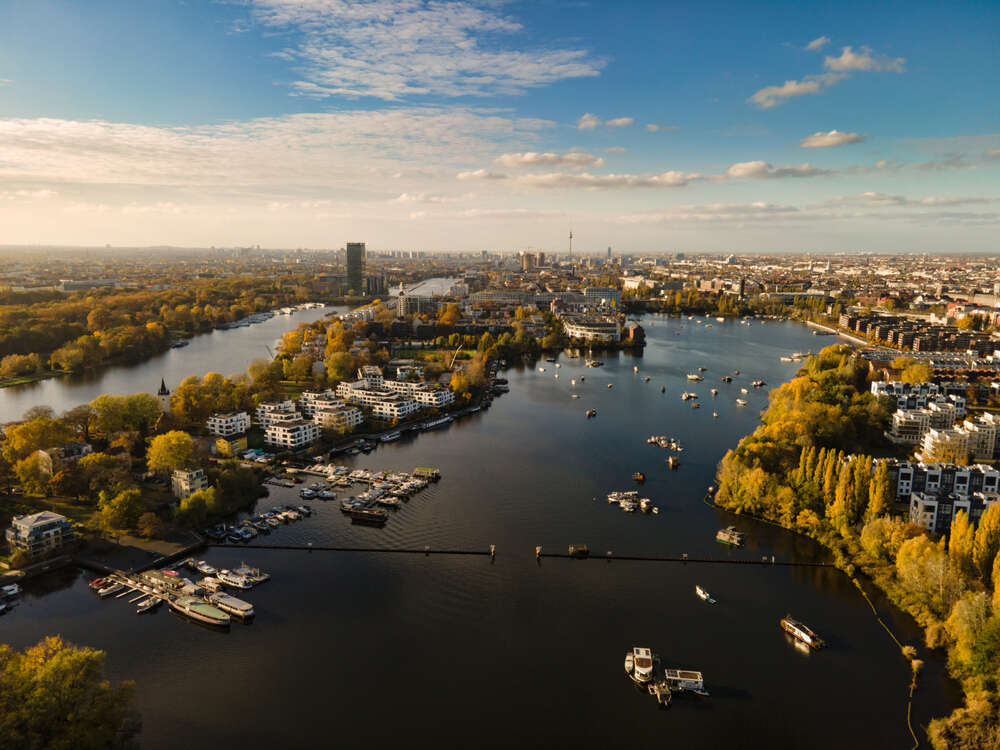
We’ve become accustomed to quasi-apocalyptic images of cities swapping streets for rivers.In fact, CNN reported that ‘Ten countries and territories saw severe flooding in just 12 days‘. Even aside from such dramatic stats, abnormal rainfalls have caused extraordinary floods in several cities across the world.

One neighbourhood in Berlin is trying to ensure that cities can become better adapted to the increasing likelihood of extraordinary wet weather events.
The theory rests on the logical foundation that cities are inherently unnatural. By smothering the earth in concrete and tarmac and loading it up with vast structures of brick, steel, and glass, cities interfere with the way nature regulates itself.
The concentration of buildings, people, and activity increases temperatures – while tarmac and concrete surfaces naturally absorb, retain, and emit heat, only pushing the mercury higher.
On the aquatic side of the equation, unnatural, human-built road and pavement surfaces stop any falling water from absorbing into the ground and then naturally providing moisture for soil and vegetation during dryer periods, while also evaporating to provide a kind of natural air conditioning.
Berlin – sponge city
The area of Rummelsburg in Berlin’s east was built 25 years ago and serves as an exemplary model of the ‘Sponge city’ concept – Stadtschwamm in German.
Buildings are wrapped in green walls, roofs and garden terraces, with thick tranches of soil up to 80cm deep, while roadside trenches between pavements and streets create a miniature urban wetland, which can retain water like a sponge and both feed it into the water table and evaporate it to keep the city cool.
During heavy rainfall, the thick layers of greenery handle, or sponge, the water better than the conventional concrete and drainage system within the city. There’s less likelihood of drains overflowing because they’re blocked or merely overwhelmed, and pavements are less likely to be transformed into temporary white water rafting courses.
The sponge system is also better for water quality in lakes and rivers throughout. During extreme weather events, the grit and grime of city living can be swept straight into these bodies of water, where unnatural substances can harm animals and plants, and natural materials like pollen and leaves can overwhelm marine life by giving them too many nutrients in one go.
While the sponge city is a great idea, of course, it can be hard to put into practice. While many cities – London included – are on a splurge of building new developments that often conform to higher eco-friendly standards (and could be encouraged, or mandated, to conform to ‘Sponge City’ design benchmarks), the vast bulk of prohibitive surfaces have already been built.
The cities of the UK, for example, already have their streets, pavements, tiled and concrete roofs – so retrofitting is the order of the day. This can be more expensive, more difficult, and can be tricky to incentivise. And while there could be profiteering enticements – a building with an accessible green roof is likely to be more interesting and appealing to buyers and renters, and public or commercial buildings could grow to produce in these spaces – it’s unclear whether that will be a significant enough boon.
Nonetheless, as extreme weather events become less out of the ordinary, adapting our greatest centres of population to better accommodate the demands of nature seems like common sense – even if it does mean boggy pavements.
[Read more: Why Am Tacheles is a resonant symbol of missed urban opportunities in Berlin]






